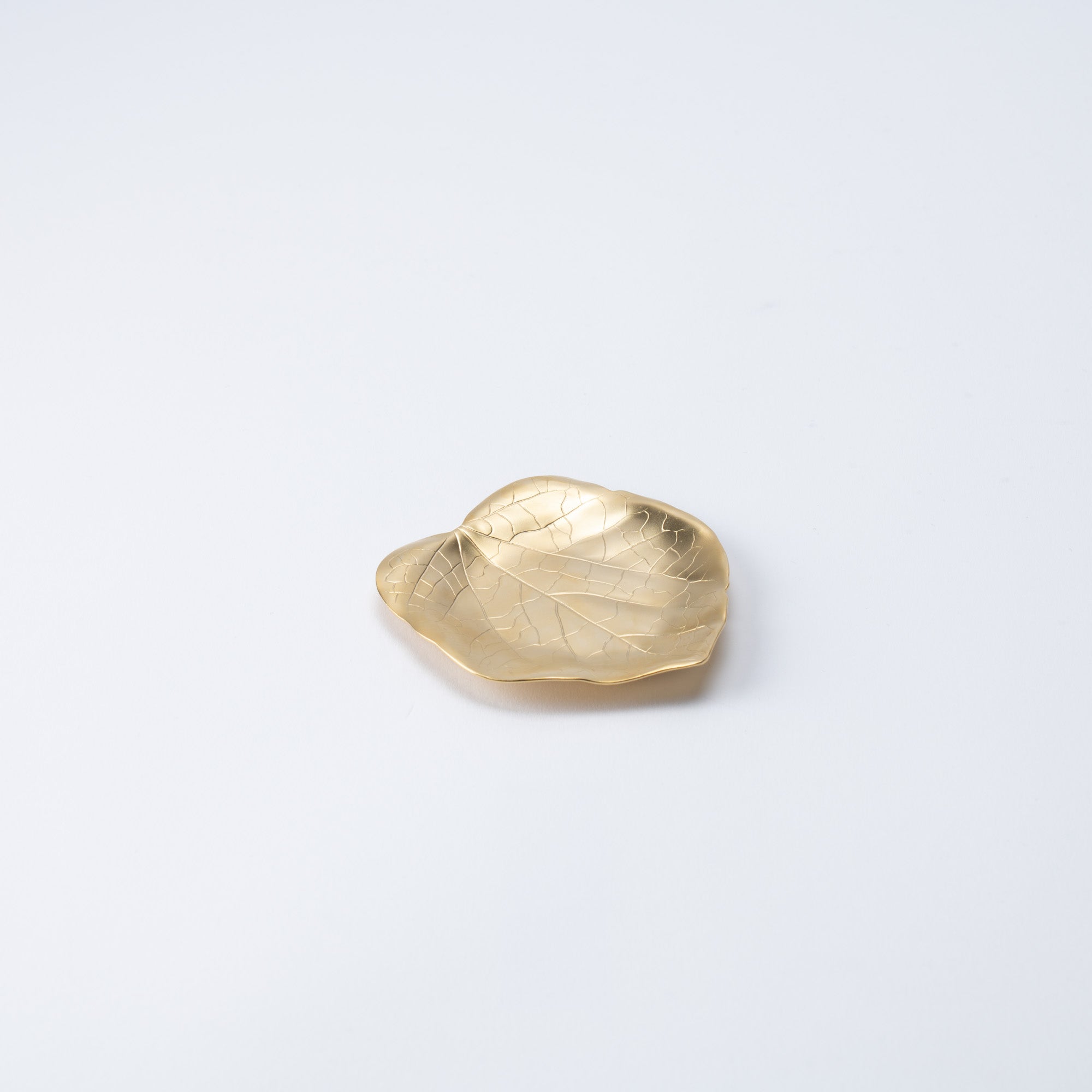
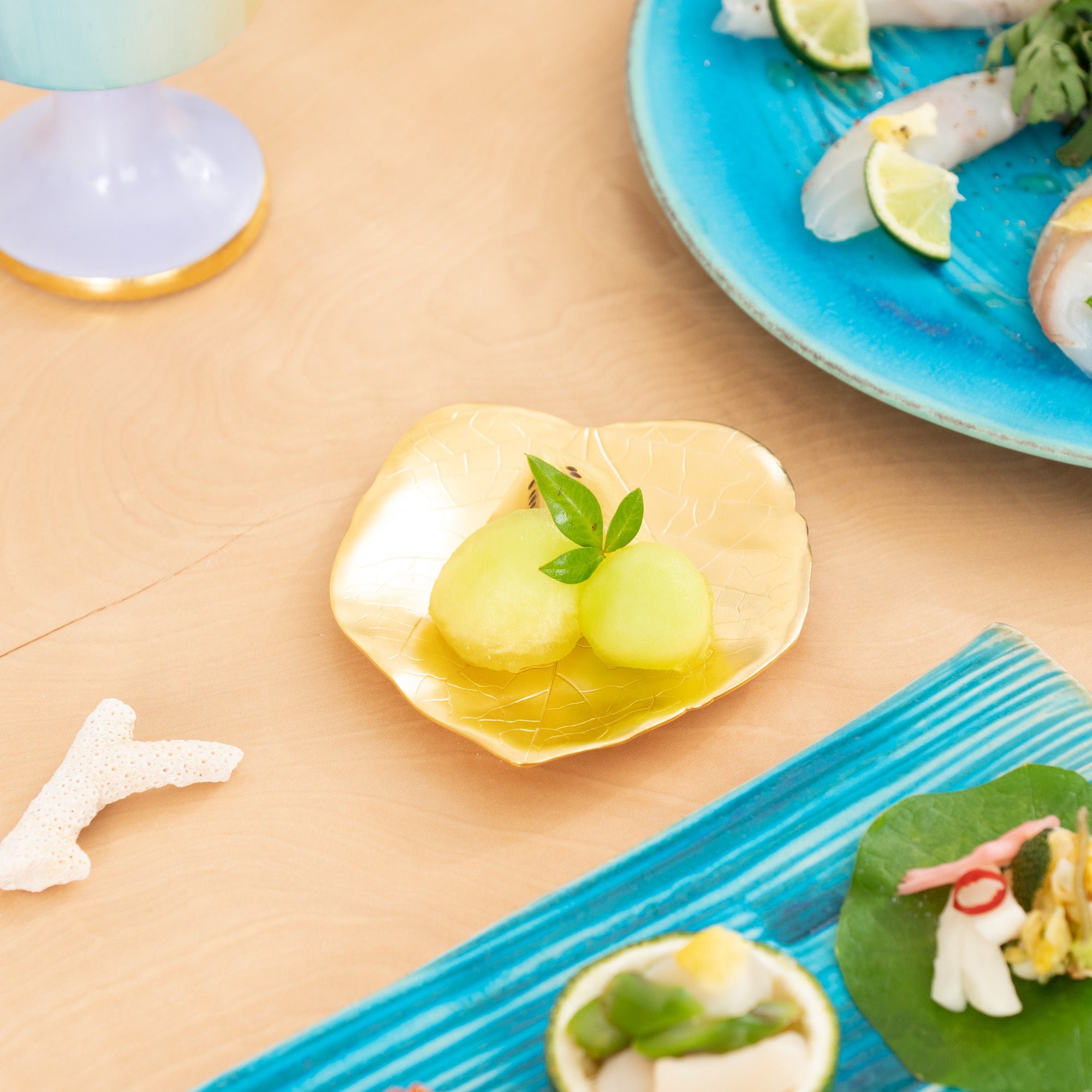
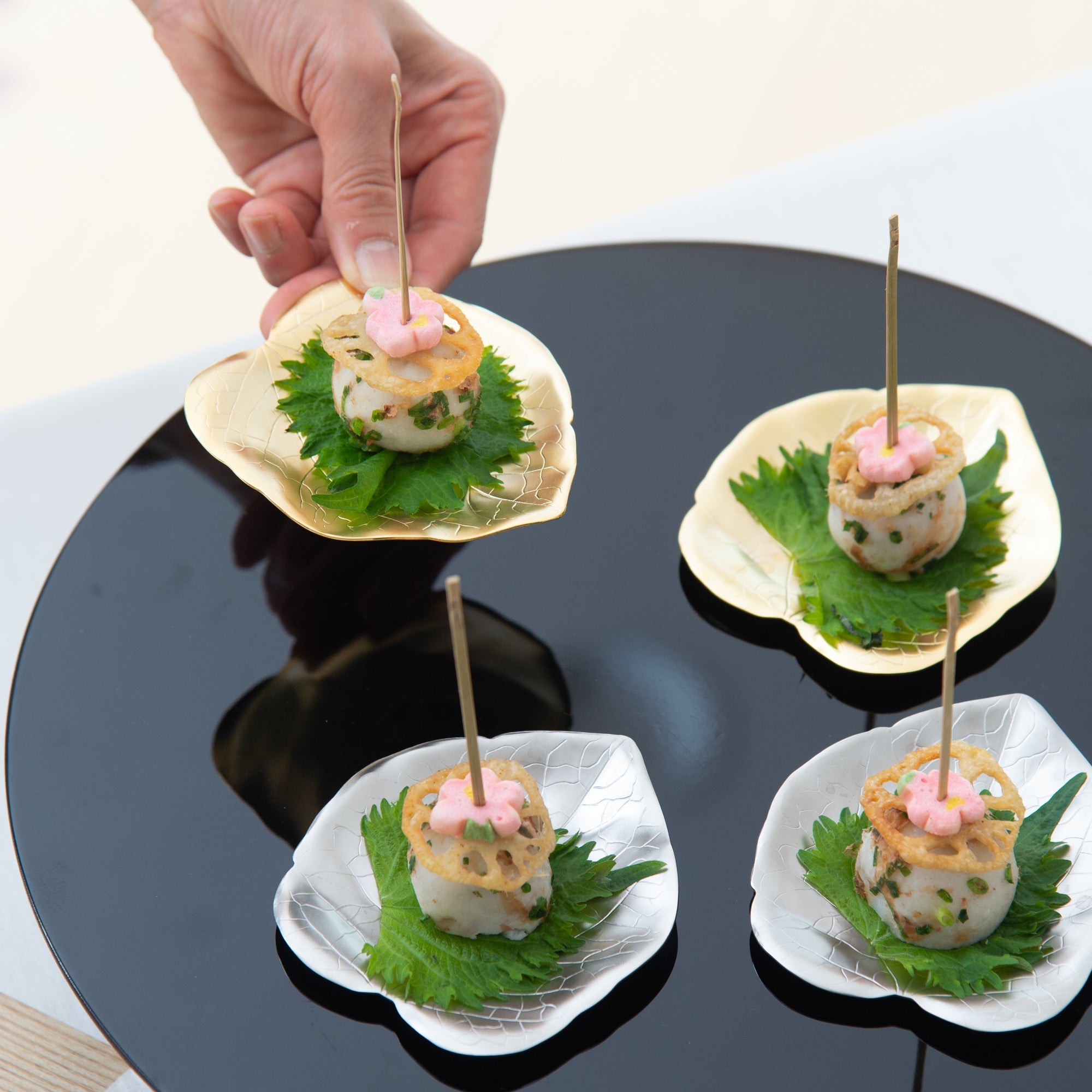
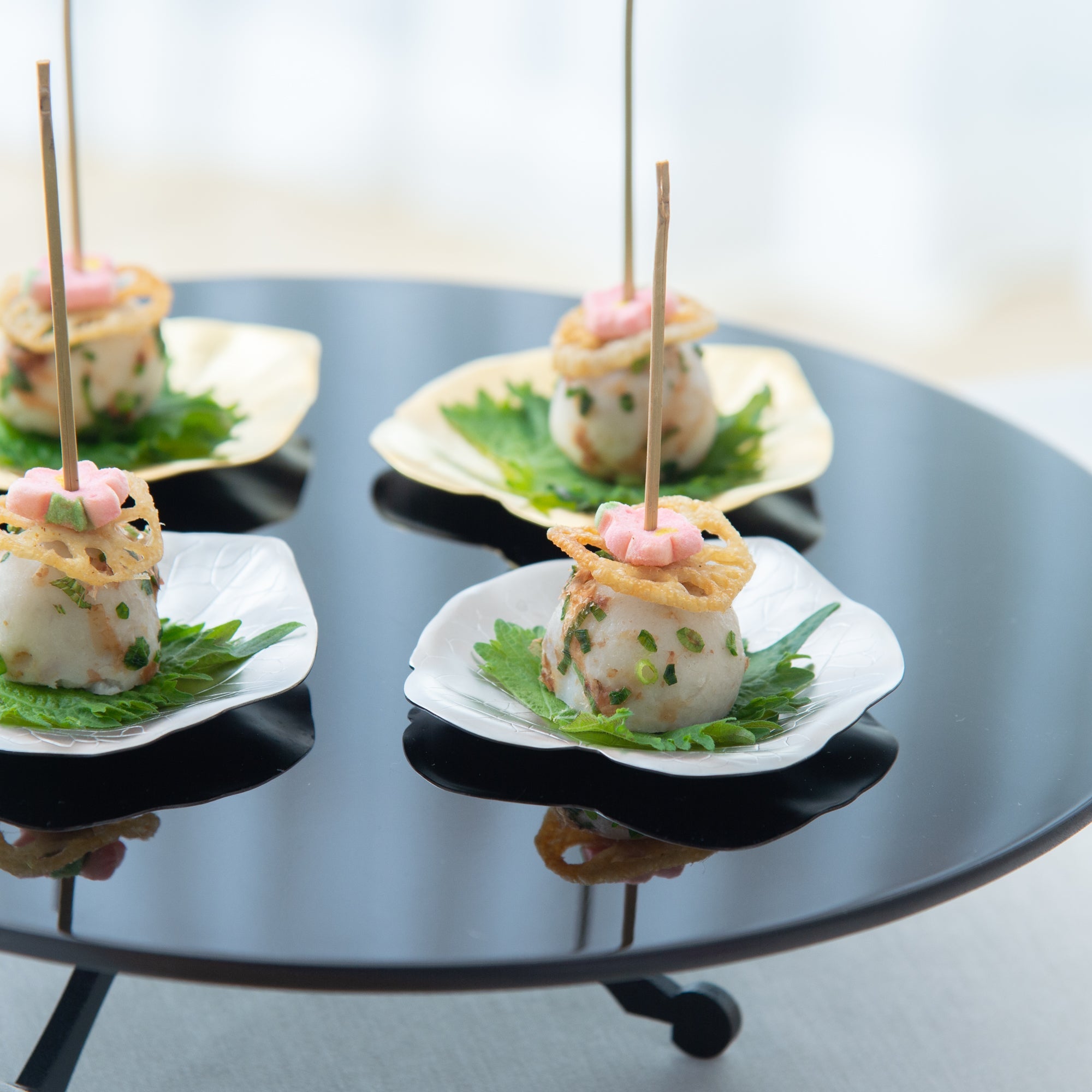
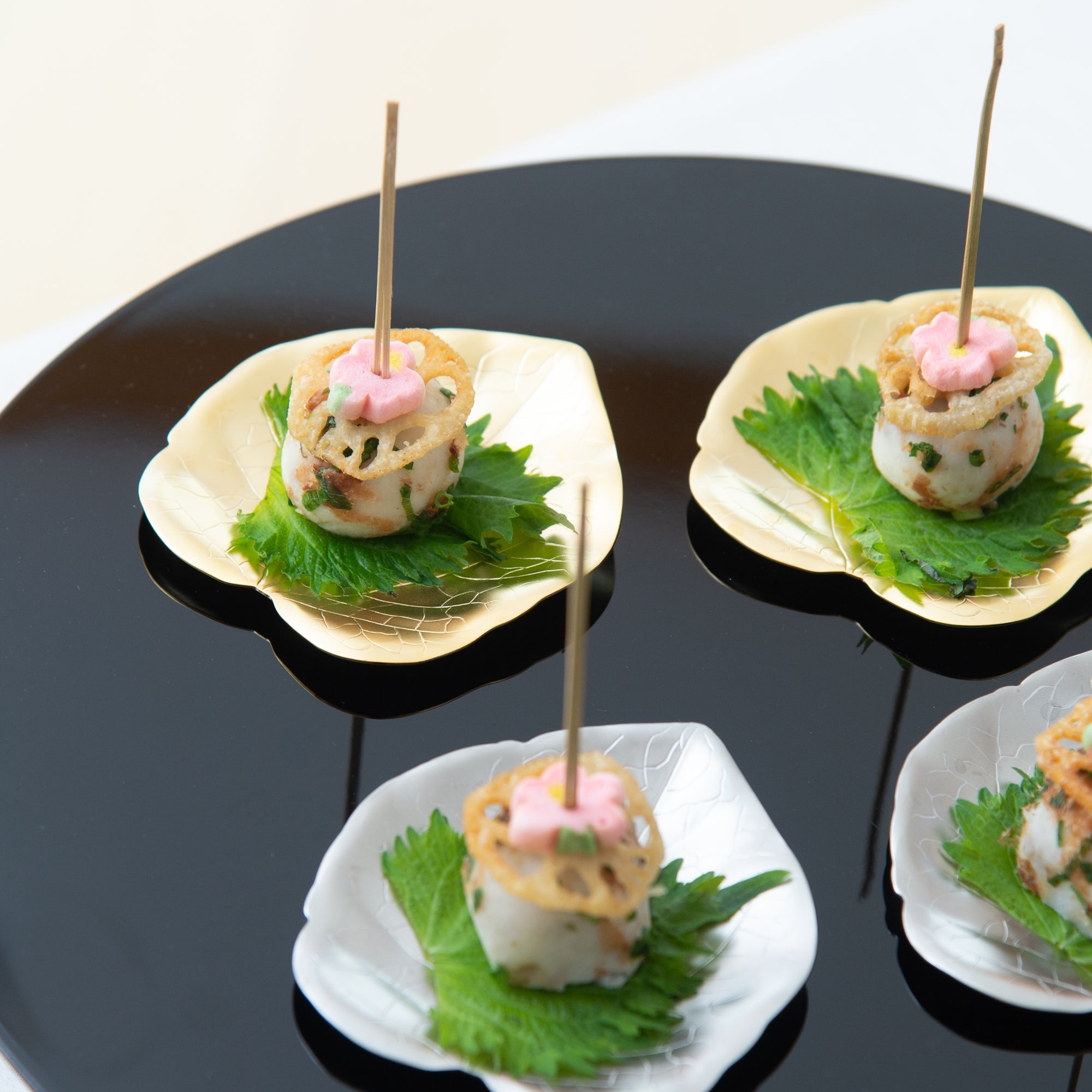
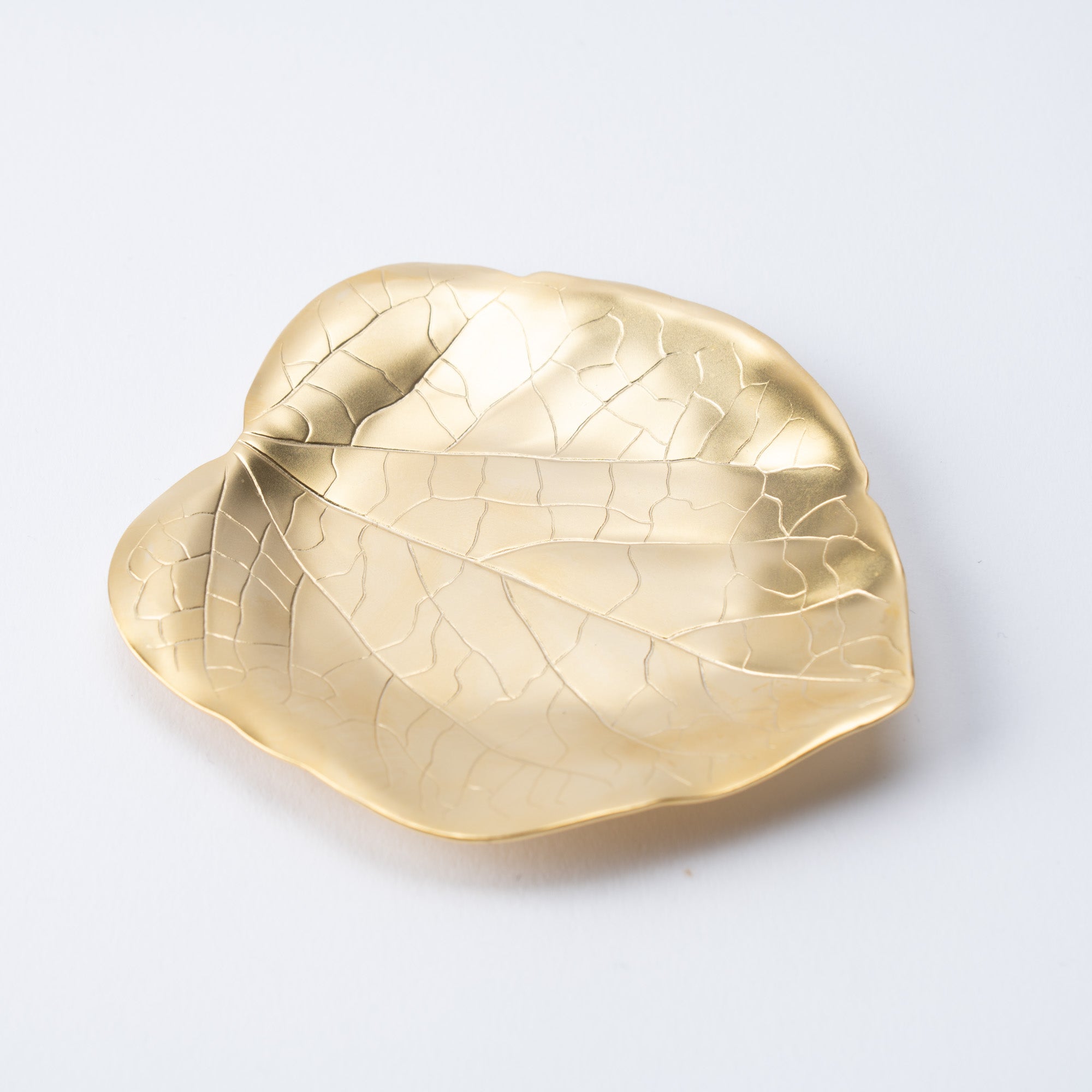
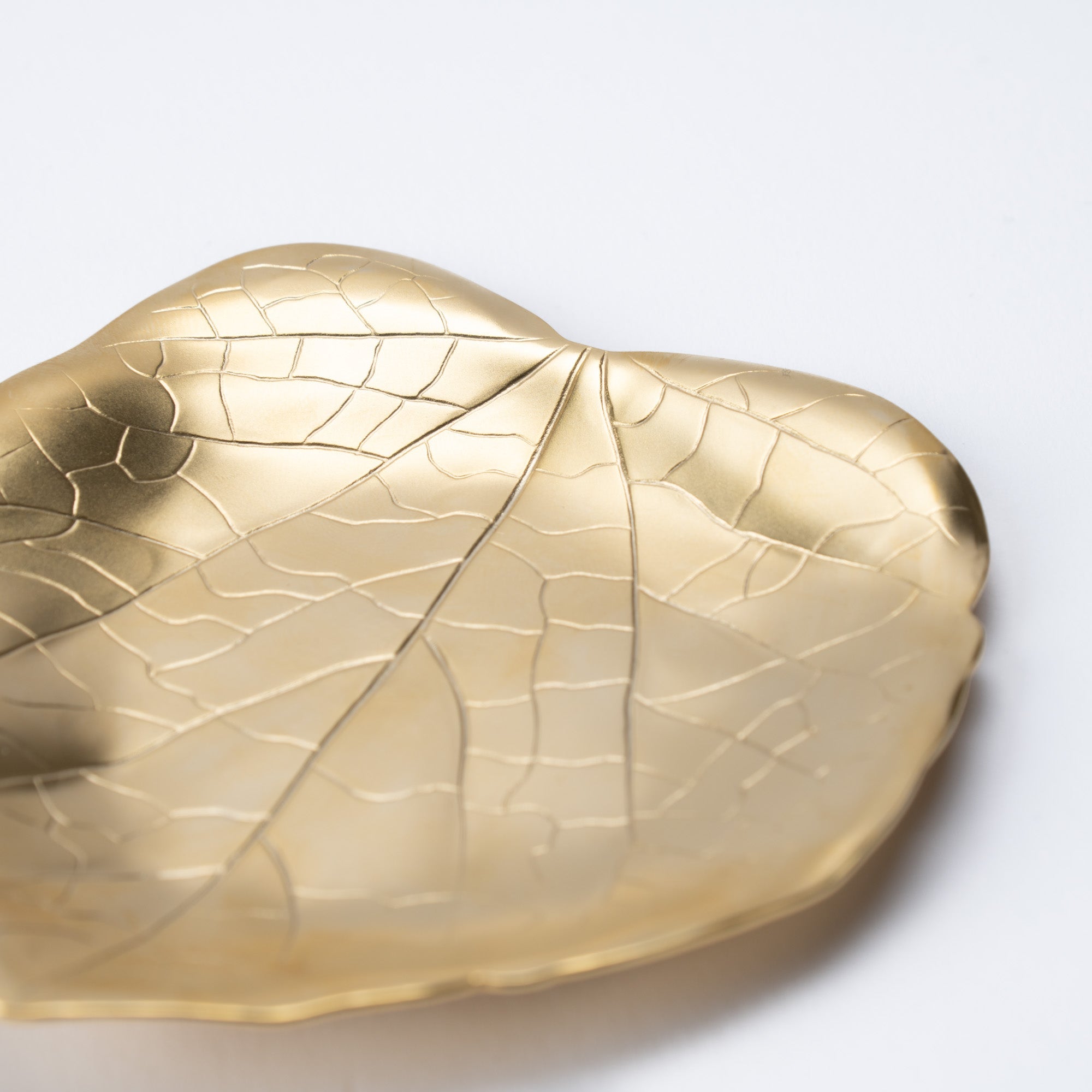
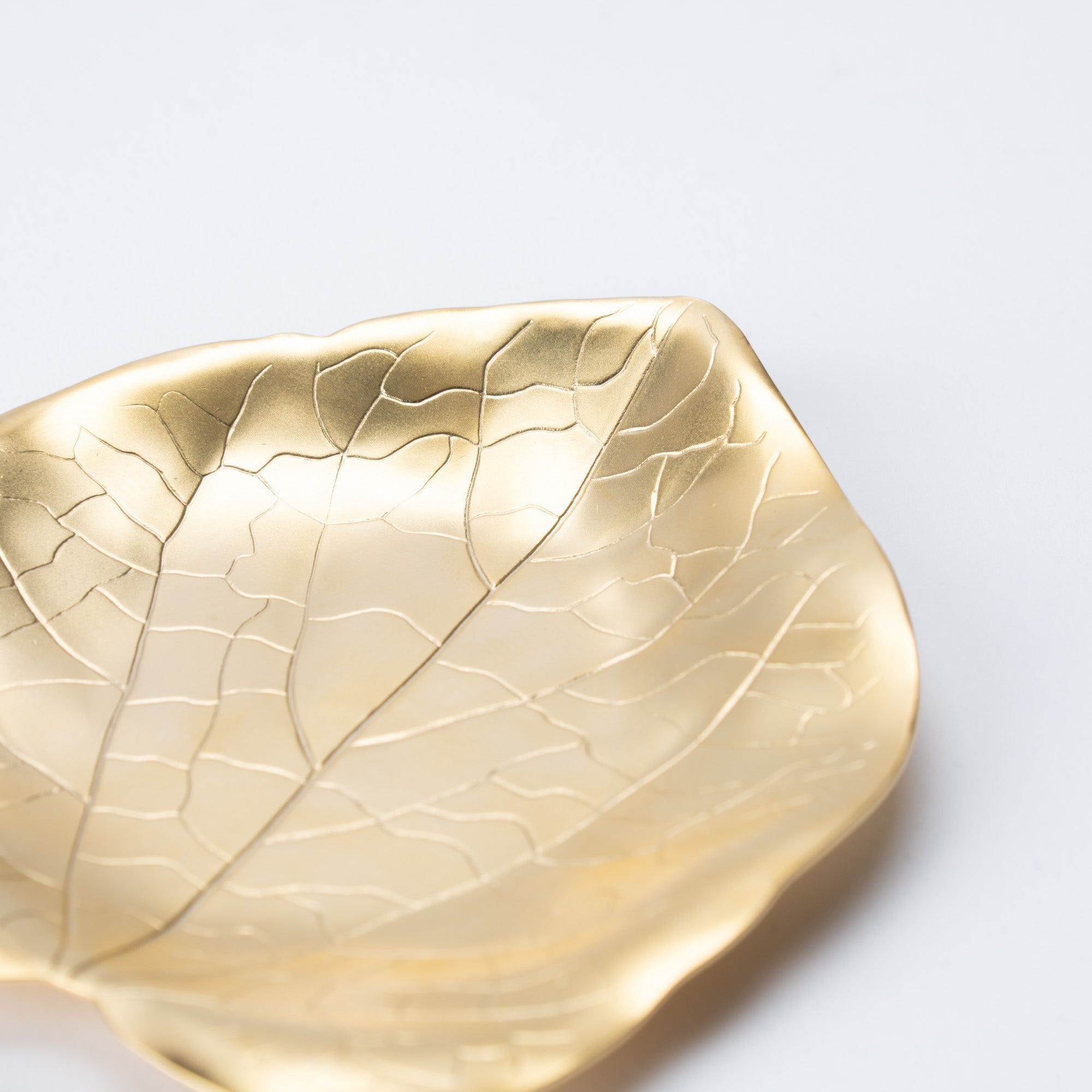
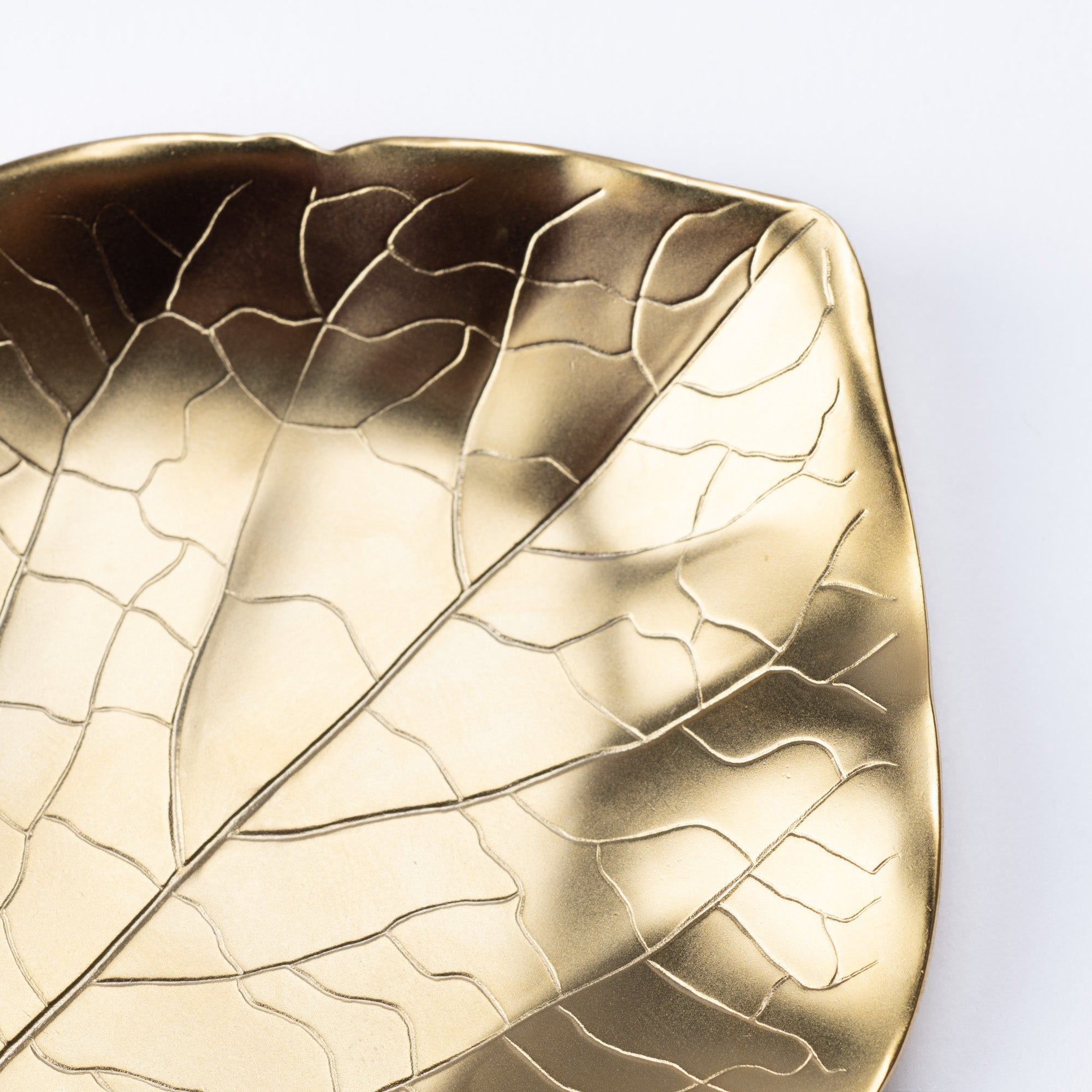
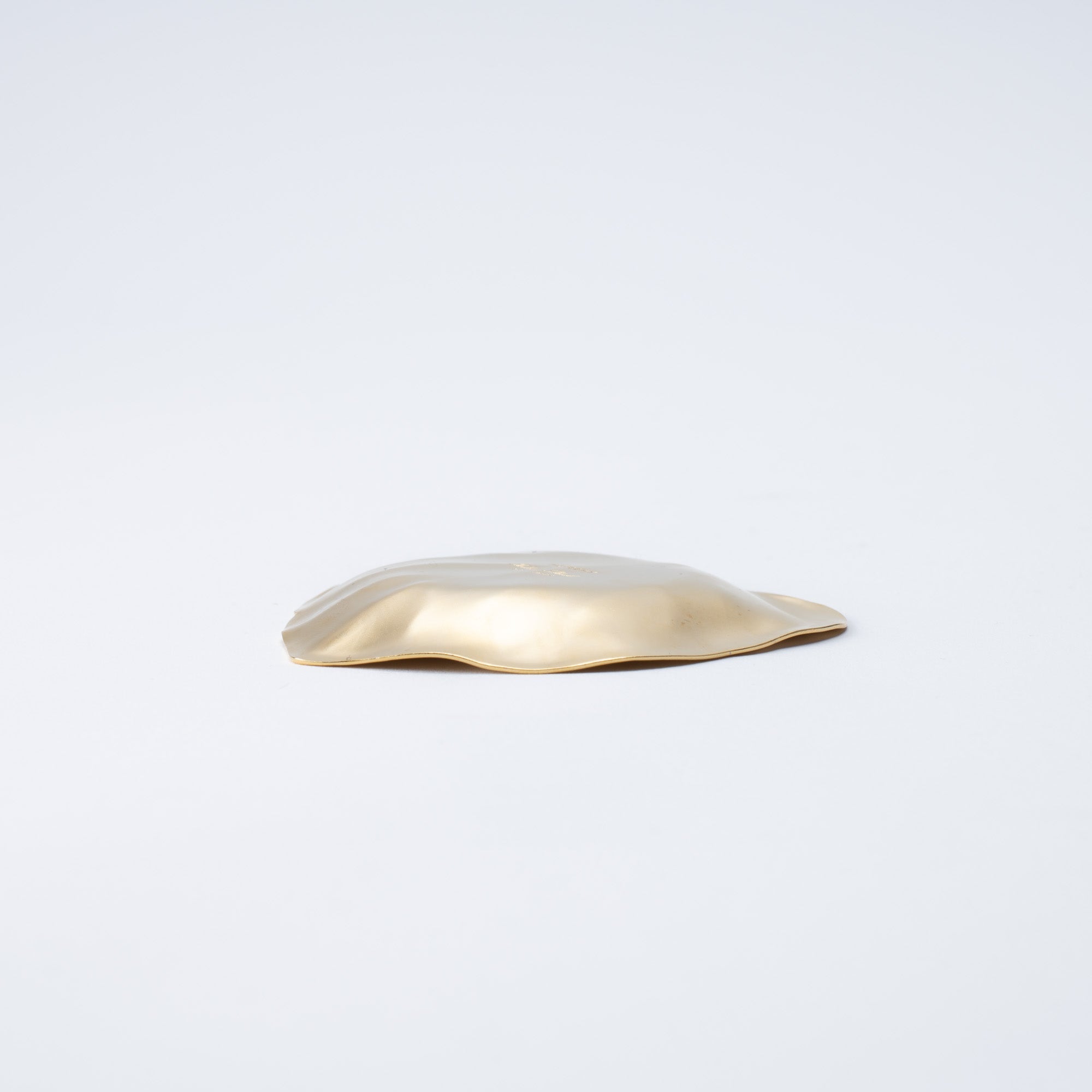
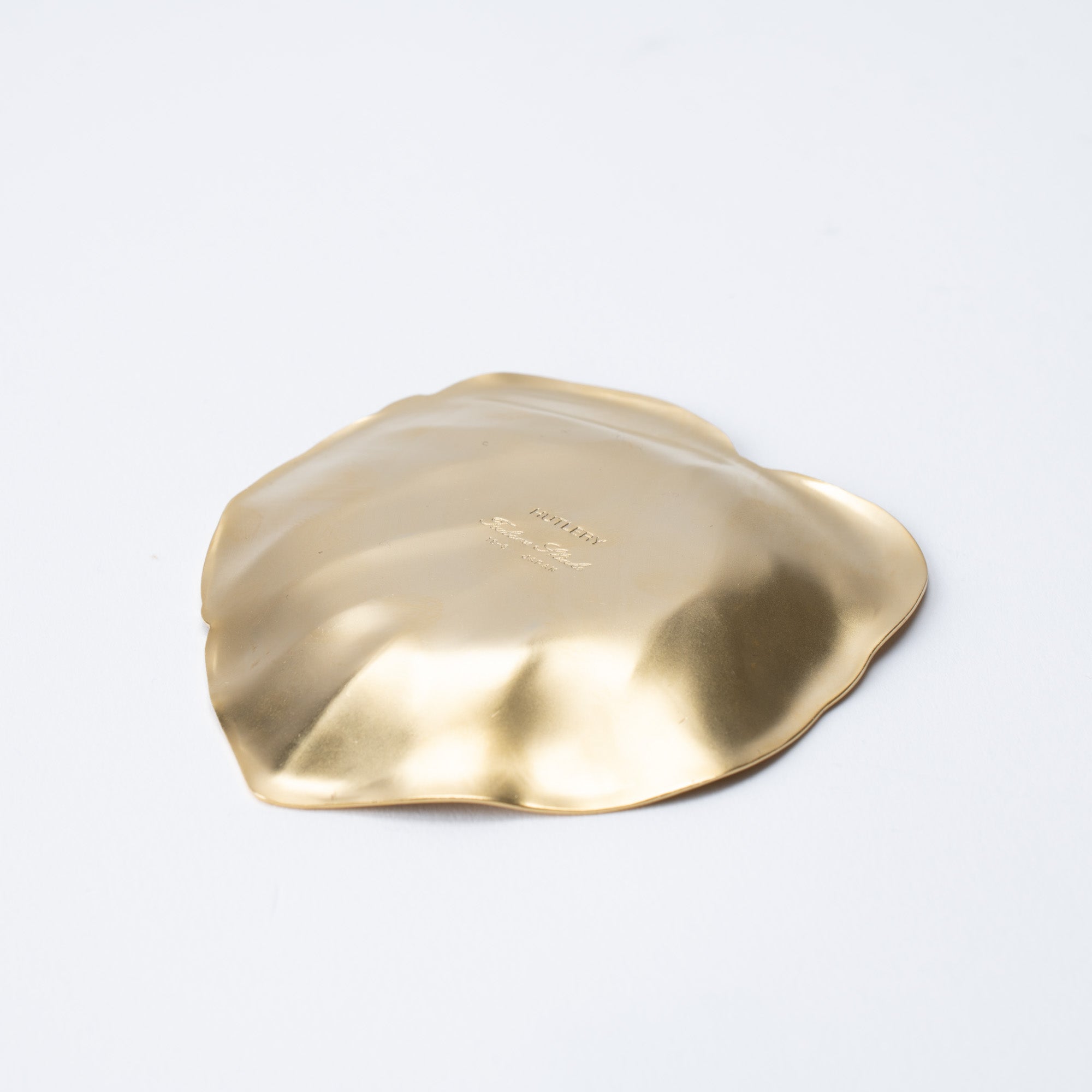
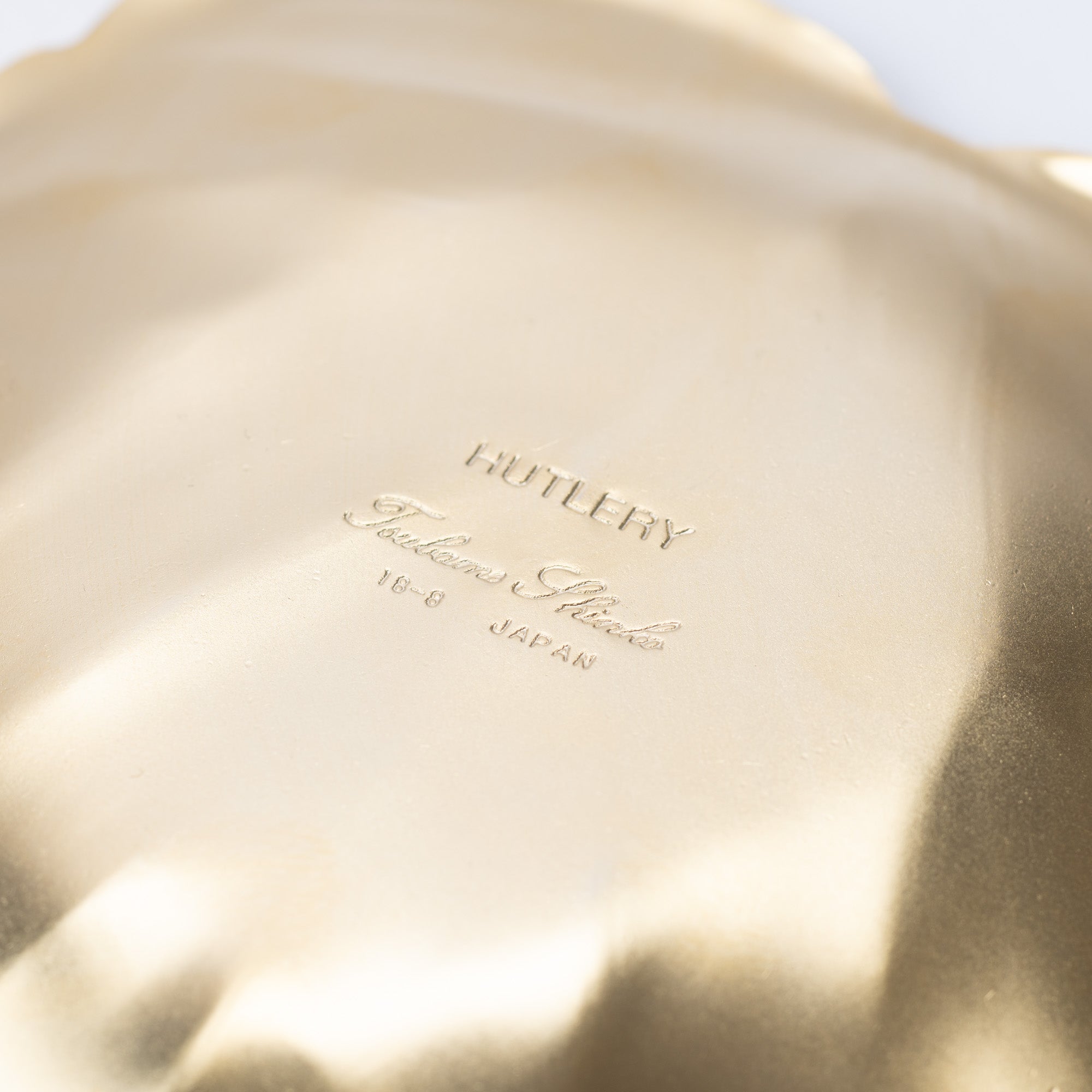
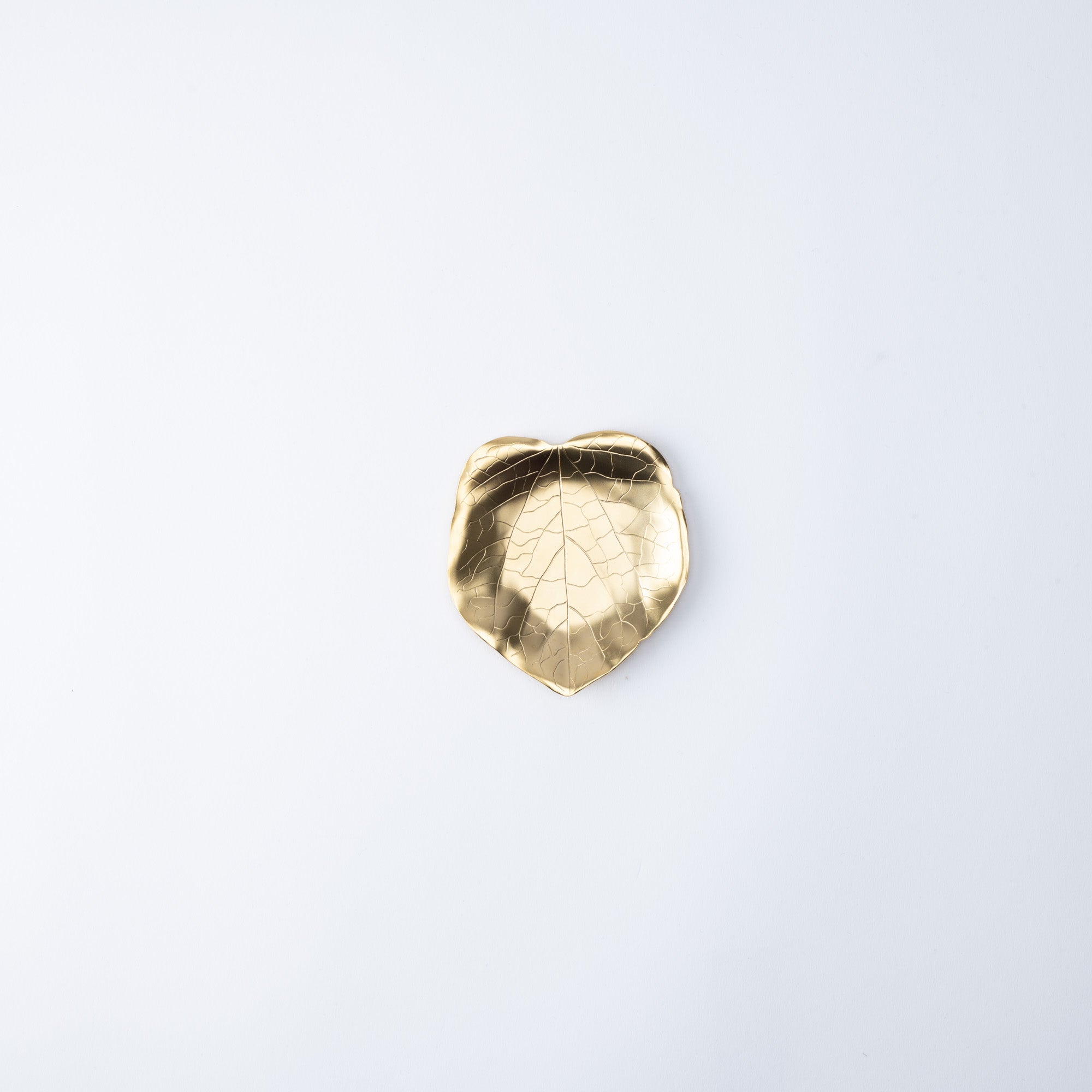
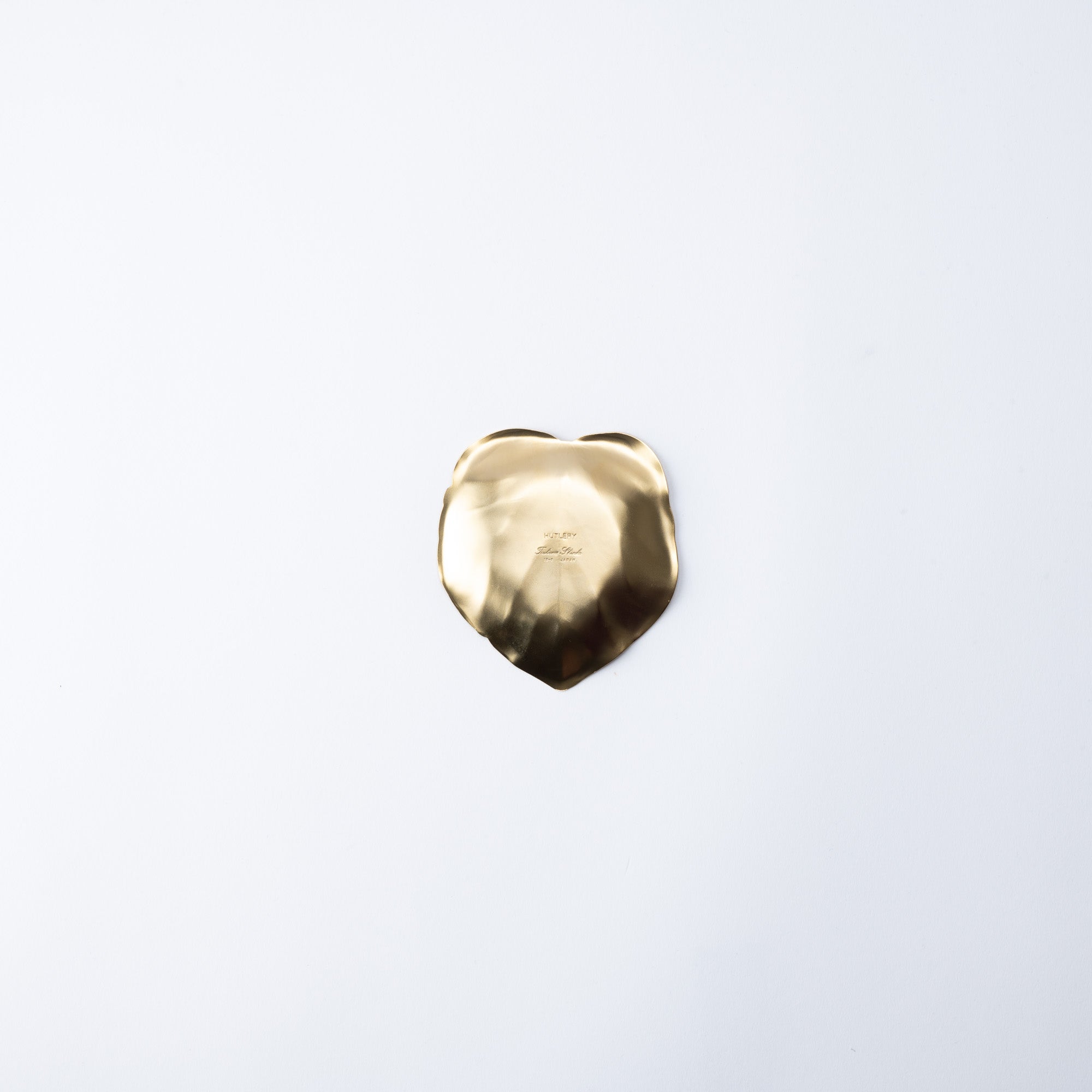
Tsubame Hutlery Gold Heart Leaf Sauce Plate
Estimated Shipping Widget will be displayed here!
This beautiful, gold sauce plate is shaped like a Heartleaf philodendron or heart-leaf. The veins of the leaves are intricately etched onto the tray's surface, using techniques from Tsubame City, Niigata Prefecture.
It weighs a mere 54g(1.9oz) and its slender design by Kaichiro Yamada, KAICHI DESIGN, makes it easily stackable. The sauce plate is an ideal size to serve fruit, small appetizers, or sauces and condiments. Its golden sheen stands out against any dining table setting.
Not limited to dining, the plate is a refined, multipurpose interior item. It can be used as a key tray at the entrance of a home, on a desk to place sticky notes or clips, or even as a soap tray!
The Tsubame Hutlery Heart-Shaped Gold Sauce Plate adds a luxurious flair to any space. It is a perfect item for everyday use, for entertaining guests, and as a gift for loved ones.
PRODUCT DETAIL
- Quantity: 1 piece
- Dimension: 9.7cm(3.8in) × 8.9cm(3.5in) × H0.5cm (0.1in)
- Material: Stainless steel
- Origin: Made in Japan - Tsubame Sanjo Metalwork
- Brand: Tsubame Shinko
Choose options
















